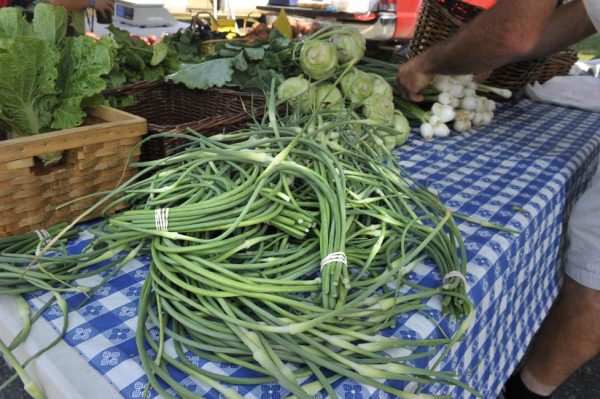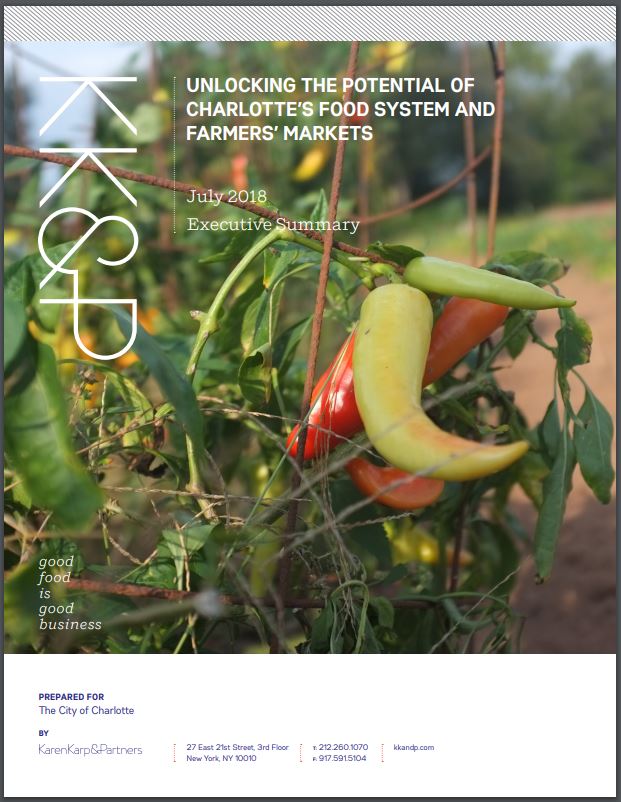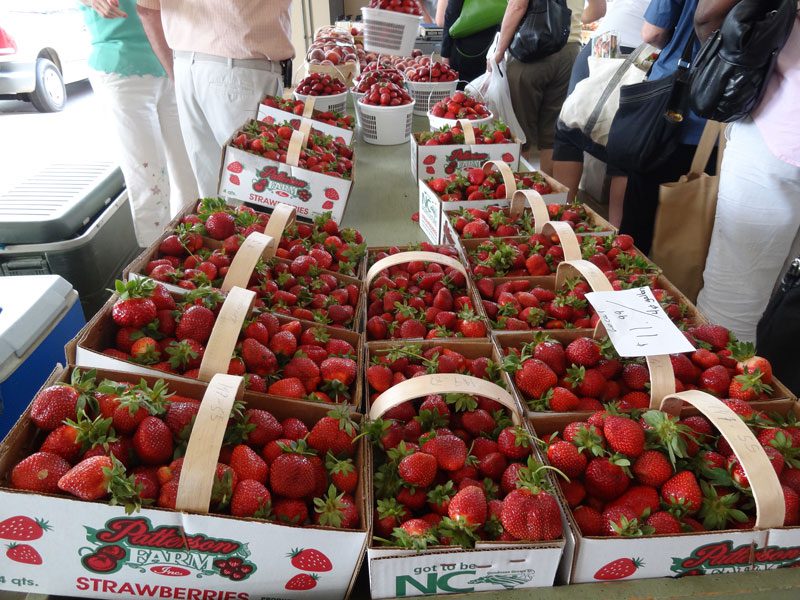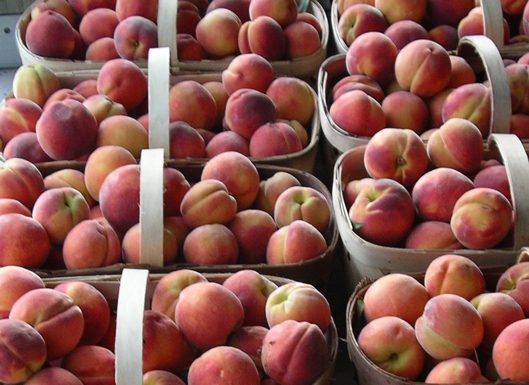Study: Charlotte region lags in food economy, farmers markets

The Charlotte region lags comparable areas in the robustness of its local food economy across multiple metrics, concludes the draft of a year-long study by the City of Charlotte.
The report from consultants KarenKarp & Partners examines the state of farming in the metro region, the landscape of farmers markets in Charlotte, wholesale activity in the region’s food economy and food access and food security. The city hired the group because it wanted a look at the regional food economy and at farmers markets as a potential tool in economic development and building stronger neighborhoods.
 To download the full report click on the image
To download the full report click on the image
The report looked at the 10-county Charlotte Metropolitan Statistical Area (MSA), which reaches from Iredell County in the north to Chester and Lancaster counties in South Carolina, and from Gaston and Lincoln counties in the west to Rowan and Union counties in the east.
The study’s conclusions offer challenges but also point to the opportunity for significant improvements. Among the findings:
- Charlotte’s state-run regional farmers market compares poorly with others in North Carolina in size, amenities and visitors.
- The various farmers markets in Charlotte and Mecklenburg County lack coordination, forcing farmers to navigate multiple venues and rules and making it hard for shoppers to find consistent information about operating hours.
- The Charlotte metro region had the second highest agricultural sales of the 11 benchmark metros.
- Charlotte region farmers lag in developing wholesale market channels, compared with the rest of the state and the other benchmark metro regions.
- The region underperforms in direct-to-consumer sales, where a farmer sells directly to the consumer such as at a farmers market.
- The Charlotte region “severely underperforms” in markets accepting SNAP (USDA Supplemental Nutrition Assistance Program, or food stamps) compared with rates in the U.S. and in the benchmark metro regions.
- The Charlotte region lacks a robust, well-coordinated and well-marketed system of support services for farmers.
- Although the Charlotte metro region ranks fourth of 11 “benchmark” metro regions in number of farms and in land in farms, Mecklenburg County ranks near the bottom in those indicators compared with the core counties in the other benchmark metro regions.
- Mecklenburg is the only major urban county in North Carolina that hasn’t adopted a Voluntary Agricultural District.
- Farmers of color (black/African-American, Latino/Hispanic, or Asian) are a quickly growing portion of the region’s farmer base.
 A bounty of strawberries from Patterson Farm in China Grove in Rowan County, for sale at the Charlotte Regional Farmers Market. Photo: Amber Veverka
A bounty of strawberries from Patterson Farm in China Grove in Rowan County, for sale at the Charlotte Regional Farmers Market. Photo: Amber Veverka
The Charlotte Regional Farmers Market, built in 1985, is a significant asset for the city, the report notes, but attracts far fewer visitors to its 22 acres than the other three state-run farmers markets. It draws about 500,000 people a year, the report says. The Raleigh market attracts seven times as many – 3.5 million. Even the Asheville market, serving a smaller population, attracts almost three times the visitors – 1.4 million. The Greensboro-Winston Salem market attracts 1.8 million. The other markets offer wholesale facilities and a restaurant, both of which Charlotte’s market lacks. One of the five sheds at the Charlotte market sits vacant, the report notes.
Among its recommendations, the report says the city could “pursue improvements to the Charlotte Regional Farmers Market.” It suggests:
- Researching the market’s customer base to learn more about today’s visitors and why people do or don’t shop there.
- Launch a centralized SNAP acceptance and a Double Bucks program, which doubles the buying power of SNAP dollars.
- Improve visibility and access, perhaps with shuttle buses, a new entrance and street connections to surrounding neighborhoods.
 Peaches at a Moore County farm stand in the N.C. Sandhills region. Photo: Ruth Ann Grissom
Peaches at a Moore County farm stand in the N.C. Sandhills region. Photo: Ruth Ann Grissom
WHY THE CITY LAUNCHED A STUDY
The Charlotte city government launched the study to look at the role of farmers markets and food in improving residents’ and neighborhoods’ health, in creating places where people could come together, and in assisting the city’s economic development.
“The city believes this is a community issue. It’s not the city doing this alone,” said Tom Warshauer, assistant director of community engagement at the city’s Department of Housing and Neighborhood Services. Food is part of the regional economy, he said, and access to fresh and healthy food is important to the community. The city has been helping fund community gardens and school gardens. “Food seemed to be an important part of the region,” he said.
Another impetus was neighborhood enthusiasm for starting farmers markets, Warshauer said. “We used to hear, ‘I want to open a farmers market, but there aren’t enough farmers to staff all the markets that we want,’ ” he said. “That was one of the initial questions – is there sufficient market opportunity to meet the demand?”
The study, he said, shows there is more opportunity in the city and the region for farms and farmers. A 2014 Food Systems Assessment Report from the CONNECT Our Future project found that hundreds of millions of dollars are leaving the Charlotte region in purchases of fruits and vegetables that could be produced in the region, which could keep those dollars at home.
In addition to pursuing improvements to the Charlotte Regional Farmers Market, the report’s other recommendations are:
- Create a Charlotte Farmers Market Association, governed by market managers and sponsors, to coordinate with and strengthen existing and new markets.
- Explore opportunities for new public markets and large-scale farmers markets, at accessible locations around Charlotte.
- Maintain and increase food production in the region, especially by supporting career pathways and better livelihoods for farmers.
Warshauer was clear that many of the recommendations aren’t initiatives the city would or could launch and would require action from other entities. He also noted that, while the KK&P report suggests changes for the Charlotte Regional Farmers Market, the state Department of Agriculture has made clear in the past that it isn’t interested in moving it to a more centrally located site.
But he said even in an era of burgeoning online sales, “People still want to meet the farmers. They want to go to the market. Cities around the world are investing in urban markets. Despite the ‘Amazon-ing’ of so many products, people still want the markets.”
WHAT HAPPENS NEXT
A public session to present the final plan and hear feedback is scheduled for 6 p.m. Tuesday, July 24 at UNC Charlotte Center City. City officials, staff and stakeholders will get a presentation on the plan that morning.